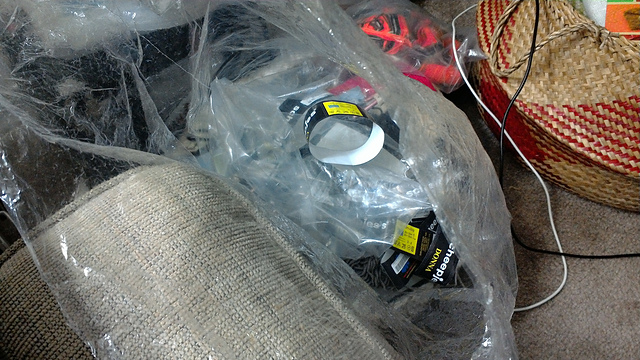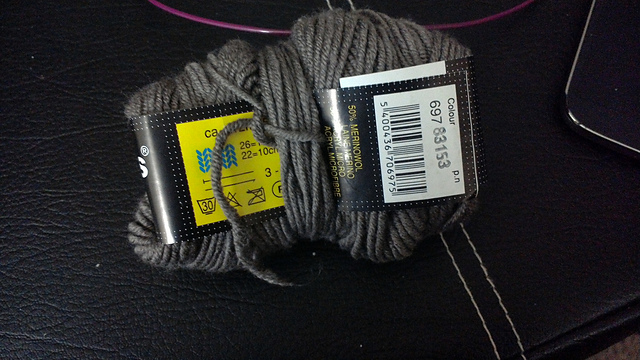Well now, isn't that odd. No posts at all till today! What is the world coming to? Bahahaha
My sister came and spent New Year with me, which was lovely, and then it was the last of the holidays and it is now time to get back to work. Or whatever the heck it is that I do.
I have been pondering resolutions for some reason. I think the last few years I have been too shell shocked to think about resolutions and goals of the year but this year, I am thinking about it. I only have one really and that is to knit more for me and knit more big projects. I have done so many small things in the past while and some nice major works would be a lot of fun to plan and execute.
One of the podcasts I follow has a craft all the things for new to you techniques going on right now, and I decided this would be a great idea even if I am not really a craft along kind of person. I have a lot of plain knitting happening, shawls, sweaters, and a fair number of small stockinette tubes aka sleeves. The next up sweaters are a size 8-10 boys sweater, mostly plain stitching, and Pole, which is all plain. A new to me technique is just the antidote needed for a plain knitting overdose. So I jumped in and decided to start a twisted stitch sampler.
Several years ago, I bought the book, Twisted Stitch Knitting by Maria Erlbacher.
I love the way these twisted stitches look. I love how they are complex and yet simple at the same time. Ordinary cables seem almost too bulky to cover a whole sweater with, but these low relief but high detail masterpieces? An entire sweater in them would be a homage to intricacy.
I read the book several times, and I took a class in this technique when I was in San Fransisco a couple years ago at Knitlab. (Knitlab has been replaced by Yarnfest. I may have to look into Yarnfest. There doesn't appear to be a hotel component and class prices are incredible!) The course was just a short one but it was very interesting and resolved my big questions about the technique that arose from the way the book was written.
It is a very simple, particularly in the round and part of the course was to show how the resultant motifs could be decorated as they often would have done for traditional costumes. I wasn't planning to do any of that on this wrap, but you never know.
I sort of wanted to follow Mrs. Zeckler's lead (a knitter who insipred the book's author) and the lead of all the people who made samplers to remember and share patterns. I had a skein of red yarn, albeit a fingering weight yarn that I planned to use. I was aiming for a lighter weight wrap with incredible detail.
The yarn has one small problem. It is a single ply. According to the book, the best yarn for this technique is a plied yarn with good twist. An unplied yarn might possibly make the project bias. When you are hoping for a rectangular stole with crisp shapes, bias is going to matter. It was also a more sticky yarn that I thought. I did a couple inches of it twisted to get an idea of gauge, and it wasn't really fun. It felt really draggy. I might get everything I wanted from a project with this yarn, but if I wasn't having fun, it would take years. And years. The craft along gives me till March and I really want to be done by then.
I opted for a a basic worsted weight, natural coloured yarn, a much more traditional look. A more traditional look, perhaps, but I have the yarn and it will do nicely. the wrap won't be nearly as light but I am sure I can use another snuggly reading by the fire kind of wrap. I don't have a fire, but I do have the right kind of chair and lots and lots of books! Good to go.
I am starting with the very first chart in the book. Just a simple slanting line of stitches that moves across an field of three purls. I veered from the chart in one respect by accident - I worked an extra row before starting the second slanting line of stitches. It adds just a touch of difference to the look but it is quite nice so I will keep the error and run with it.
Each section will be 6 or more inches long and the row counts will probably vary up to 8 and maybe even 10 inches. I am going to let the stitches determine the right length of panel for their complexity. The goal is to show off the stitches rather than having tons of different stitch patterns in my sampler.
I don't know what pattern will be next. I am going to play it by ear but in general my plan is to have the patterns become more complex for the length of wrap I want and then go back to simpler patterns ending, once again with very simple patterns. The patterns might repeat and might not. That is a decision for another day.
Time for coffee and to see what trouble I can get into and knitting. Some plain, some not so plain, but all very good.











































